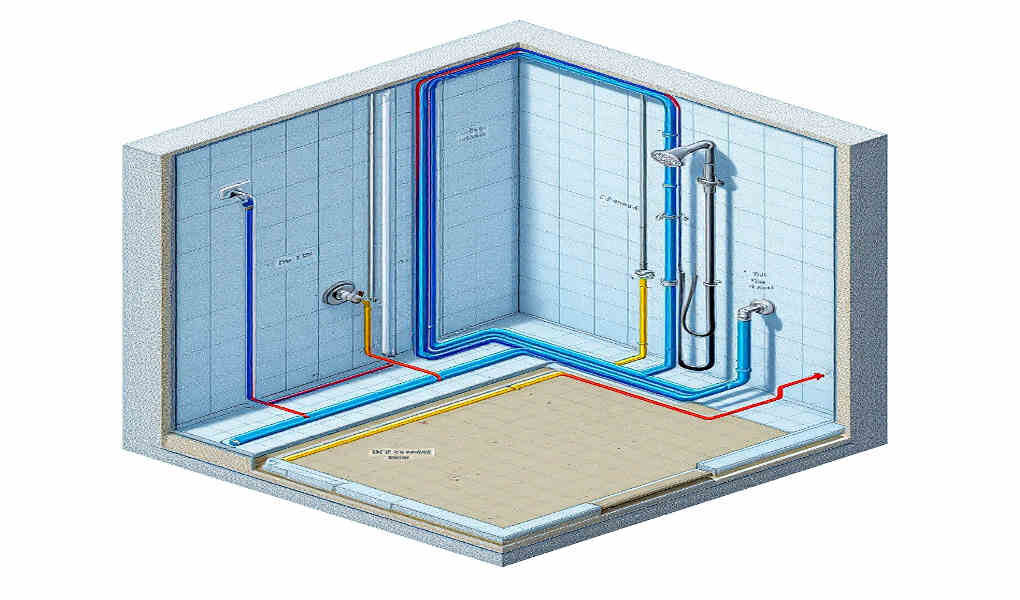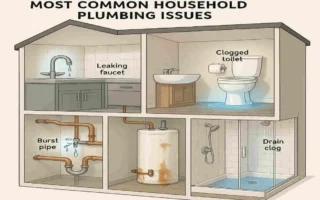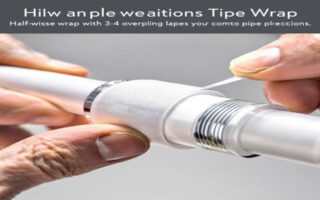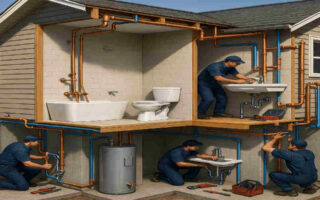When it comes to home improvement, few upgrades add as much value and comfort as a well-installed shower. Whether you’re remodeling your bathroom or building a new one, learning how to install house plumbing for a shower can save you money, give you control over the process, and leave you with the satisfaction of a job well done.
A properly installed shower doesn’t just boost your home’s value—it also ensures your bathroom is efficient, durable, and safe from potential water damage. Poor plumbing can lead to leaks, mold growth, and long-term structural issues, so taking the time to do it right is essential.
Understanding Shower Plumbing Basics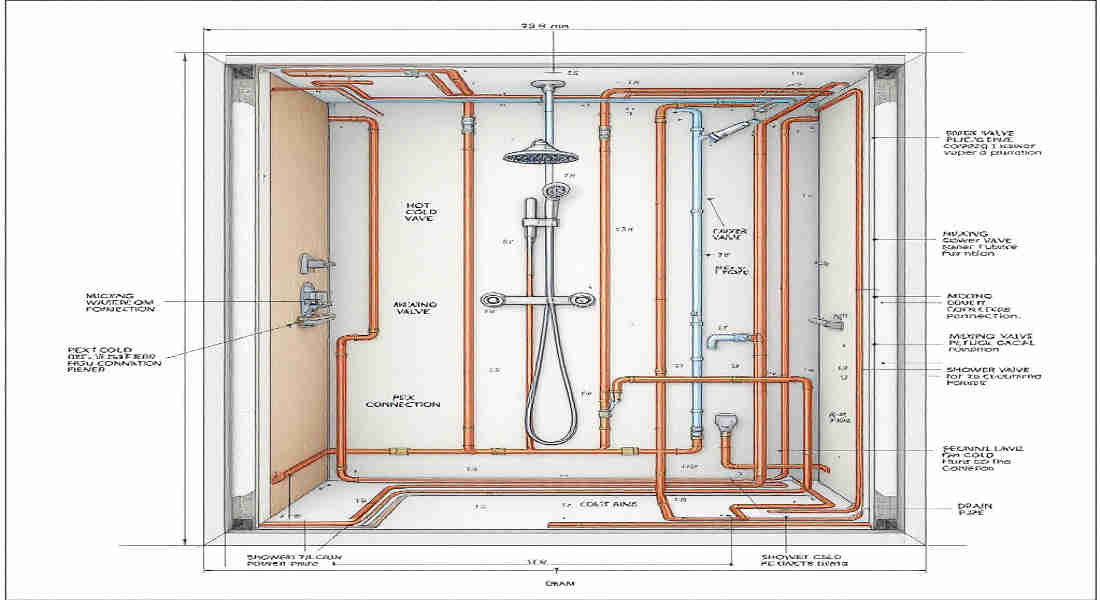
Before jumping into the installation, it’s important to familiarize yourself with the basic components of shower plumbing. Each part plays a crucial role in ensuring your shower works efficiently and reliably.
Key Components of Shower Plumbing
Here are the main elements you’ll be working with:
- Shower Valve: Controls the flow and temperature of water.
- Riser: The pipe that carries water from the valve to the showerhead.
- Showerhead: The fixture that disperses water for bathing.
- Drain: Removes wastewater and ensures proper drainage.
- Water Supply Lines: Pipes that carry hot and cold water to the shower.
Understanding these components will help you visualize how the system works and what needs to be installed.
Types of Pipes Used in Shower Plumbing
The type of pipes you choose can impact durability, cost, and ease of installation. Here’s a quick rundown of common pipe materials:
Pipe Type Advantages Disadvantages
PEX Flexible, easy to install, affordable, not UV-resistant, may require special fittings
Copper is Durable, long-lasting, and resists bacteria. It is Expensive and requires soldering.
PVC is Affordable, lightweight, and corrosion-resistant. Not suitable for hot water lines
Choose a material that fits your budget, skill level, and local building codes.
Waterproofing and Drainage
Waterproofing is critical to prevent leaks and water damage. Use a high-quality waterproof membrane on the walls and floors of your shower area. Additionally, ensure your drain system is properly sloped to allow efficient water removal.
Preparing Your Shower Area for Plumbing Installation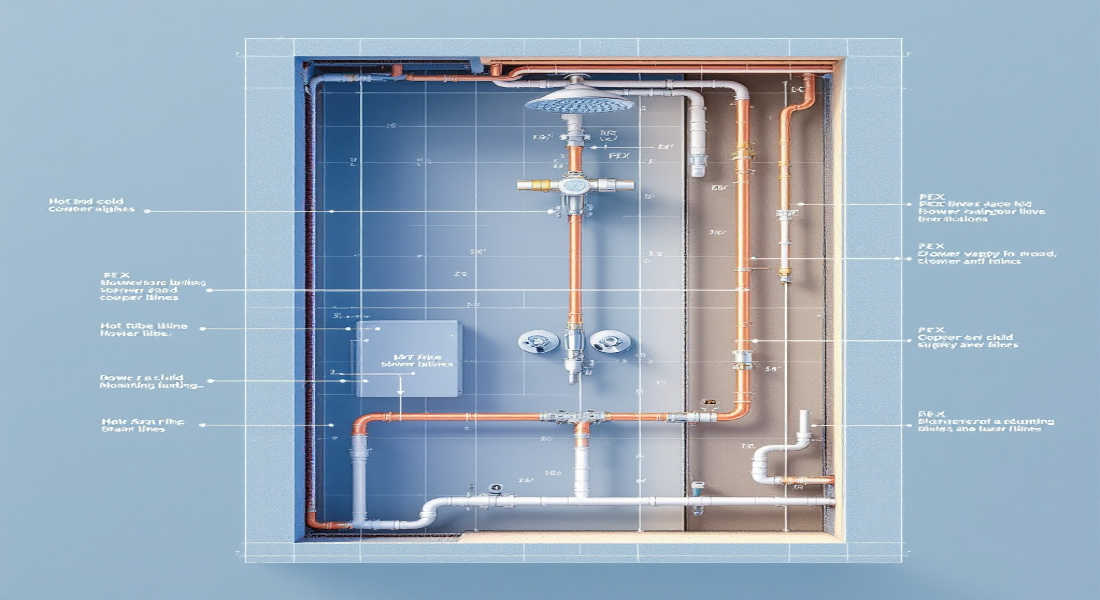
Proper preparation is the foundation of a successful plumbing project. Skipping steps at this stage can lead to costly mistakes down the line.
You may also read (static test in your home plumbing).
Assess and Prepare the Shower Space
- Remove Old Fixtures: Start by disconnecting and removing any existing shower fixtures.
- Inspect for Mold or Mildew: Treat any mold or mildew issues before proceeding.
- Waterproof the Area: Apply waterproofing membranes to the walls and floor to protect against leaks and moisture buildup.
Tools and Materials Checklist
Before starting, gather all the tools and materials you’ll need:
- Tools: Pipe cutter, adjustable wrench, screwdriver, level, drill, and soldering kit (if using copper pipes).
- Materials: Shower valve, riser pipe, fittings, plumber’s tape, waterproof membrane, and drain assembly.
Safety Precautions and Building Codes
Be sure to:
- Turn off the water supply before starting.
- Wear safety goggles and gloves.
- Check local plumbing codes to ensure compliance with regulations.
By preparing thoroughly, you’ll set yourself up for a smooth installation process.
Step-by-Step Guide on How to Install a House Plumbing for a Shower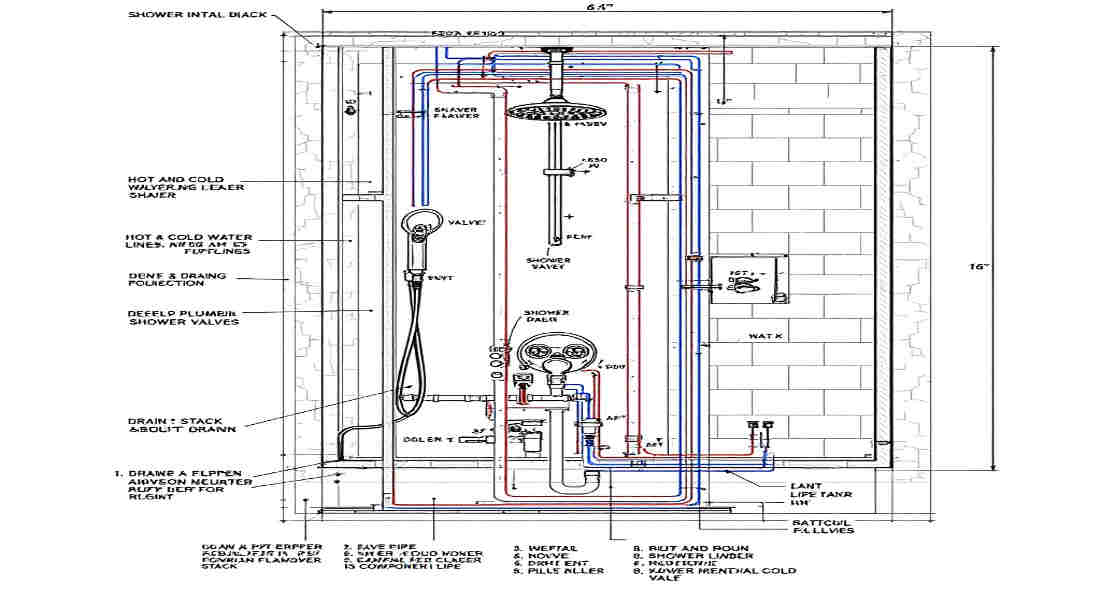
This section provides a detailed walkthrough of the installation process. Follow these steps carefully for professional results.
Install the Shower Drain
- Position the Drain: Mark the location of the drain on the subfloor and cut an opening if needed.
- Secure the Drain: Attach the drain assembly to the waste pipe, ensuring it’s tightly sealed to prevent leaks.
Install the Shower Valve
- Mark the Valve Height: Measure and mark the desired height for the shower valve.
- Cut the Access Hole: Use a drill or saw to create an access hole in the wall.
- Secure the Valve: Attach the valve to the framing, ensuring it’s level and properly aligned with the water supply lines.
Connect Water Supply Lines
- Measure and Cut Pipes: Use a pipe cutter to cut the supply lines to the appropriate length.
- Attach Fittings: Use compression fittings or solder connections for a leak-proof seal. Apply plumber’s tape to threaded joints.
- Connect to the Valve: Attach the hot and cold water lines to the corresponding inlets on the shower valve.
Install the Shower Riser and Showerhead
- Attach the Riser: Connect the riser pipe to the valve and secure it to the wall.
- Install the Showerhead: Screw the showerhead onto the riser, using plumber’s tape to prevent leaks.
Testing and Finalizing Installation
- Check for Leaks: Turn on the water supply and test each connection for leaks.
- Seal Gaps: Use silicone caulk to seal any gaps around the fixtures.
- Clean the Area: Remove debris and wipe down surfaces.
You may also read (santee in home plumbing).
Tips and Tricks from the Pros to Ensure a Flawless Installation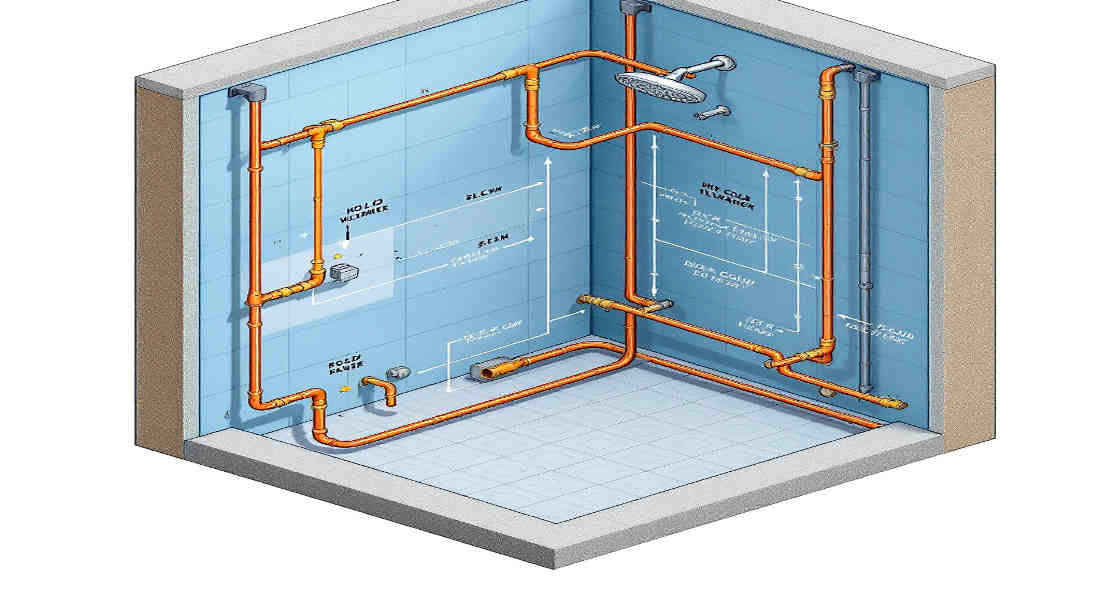
Even with a detailed guide, a few insider tips can make a big difference:
- Measure Twice, Cut Once: Accuracy is critical for a leak-free installation.
- Invest in Quality Materials: High-quality pipes, valves, and fittings will last longer and perform better.
- Be Patient: Rushing the process can lead to mistakes. Take your time to do it right.
- Know Your Limits: If you encounter a problem you’re unsure how to fix, don’t hesitate to call a professional plumber.
Maintenance Tips for Your Shower Plumbing
Proper maintenance will keep your shower plumbing in top condition for years to come.
- Inspect for Leaks: Check connections and seals regularly for signs of leaks.
- Clean Showerheads: Remove mineral buildup by soaking the showerhead in vinegar.
- Ventilation: Use a bathroom fan or open a window to prevent mold and moisture damage.
A little maintenance goes a long way in preserving your investment.
Benefits of Installing Shower Plumbing Yourself
Taking on this project yourself has several advantages:
- Cost Savings: Avoid expensive labor costs by doing the work yourself.
- Customization: Choose materials and fixtures that match your preferences.
- Satisfaction: There’s nothing quite like the pride of completing a DIY home improvement project.
You may also read (are coffee grounds bad for your home plumbing).

